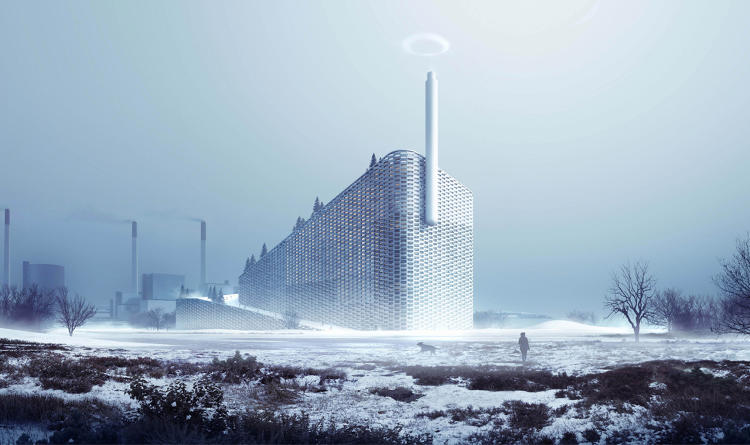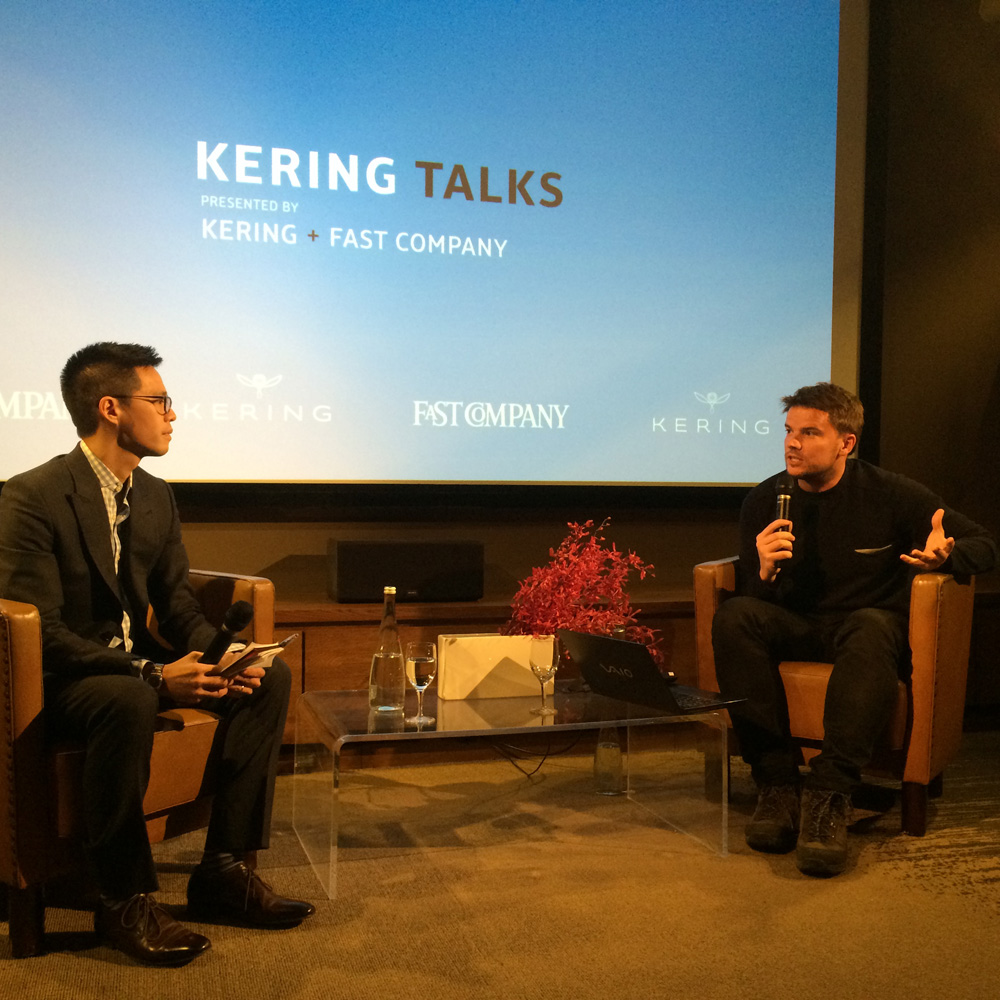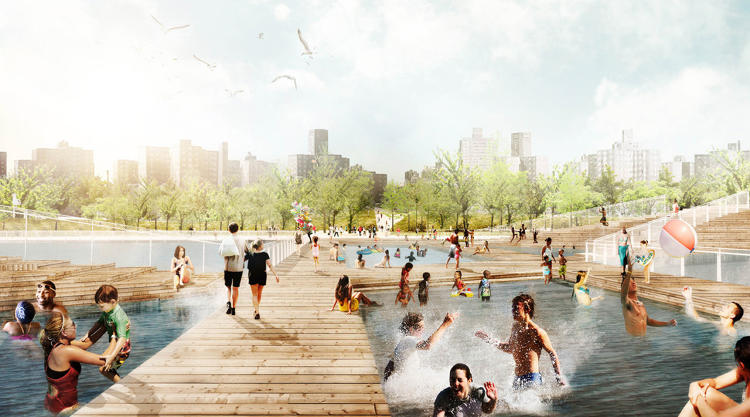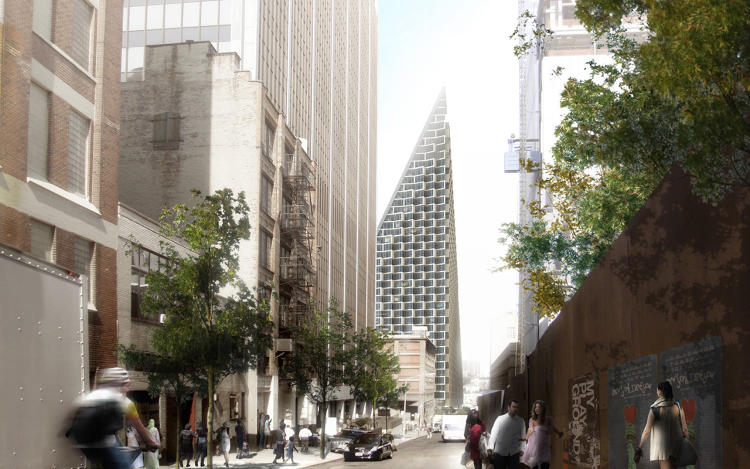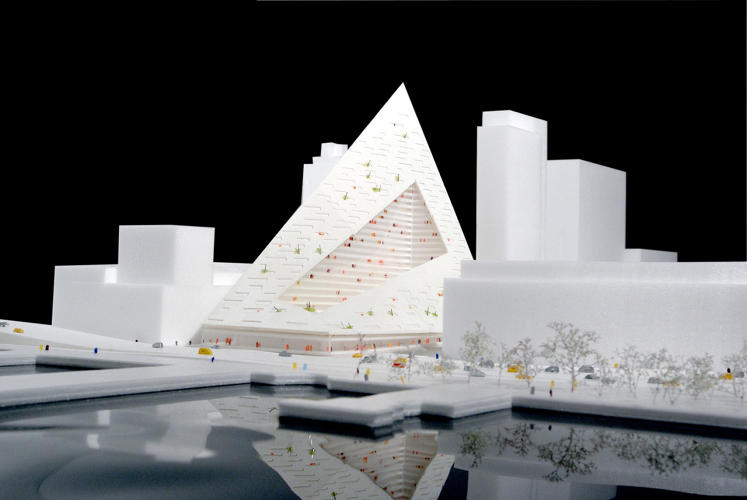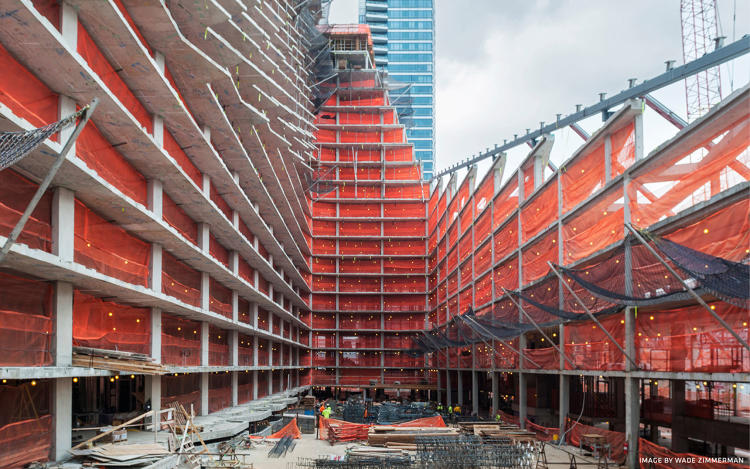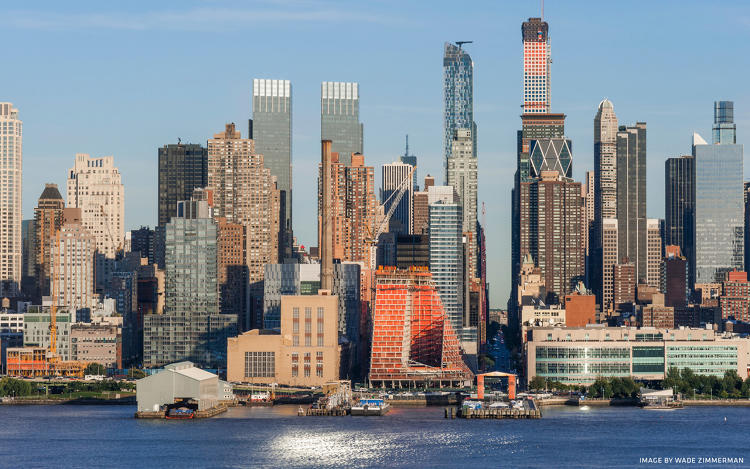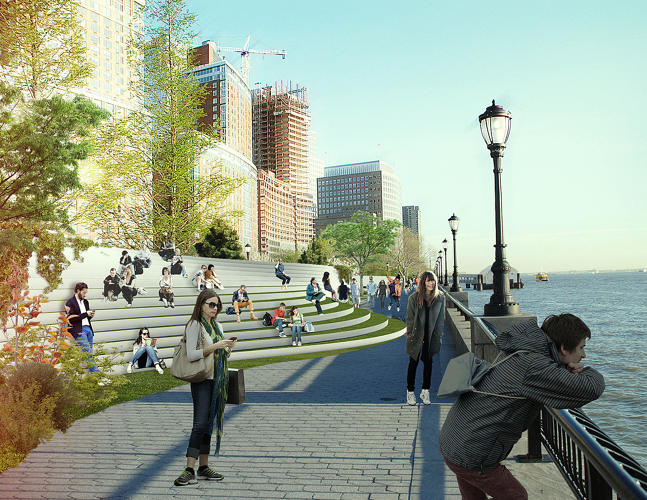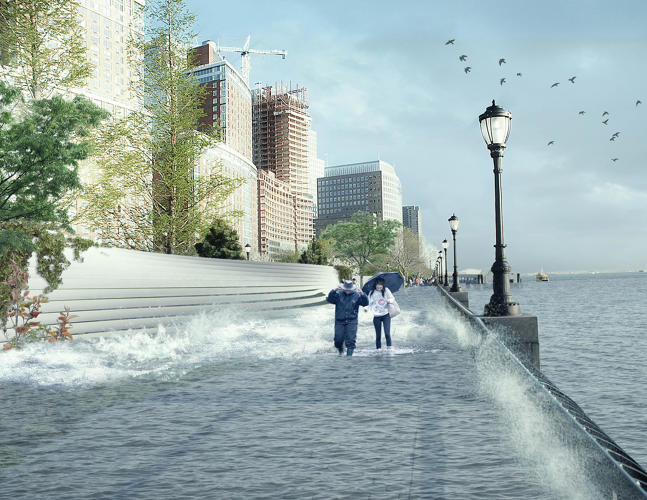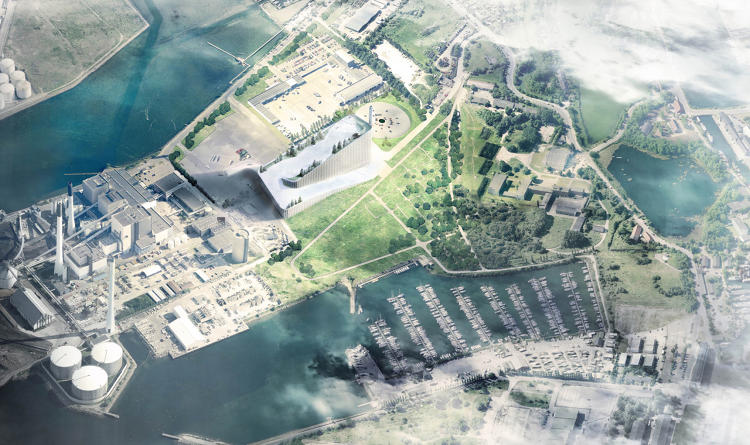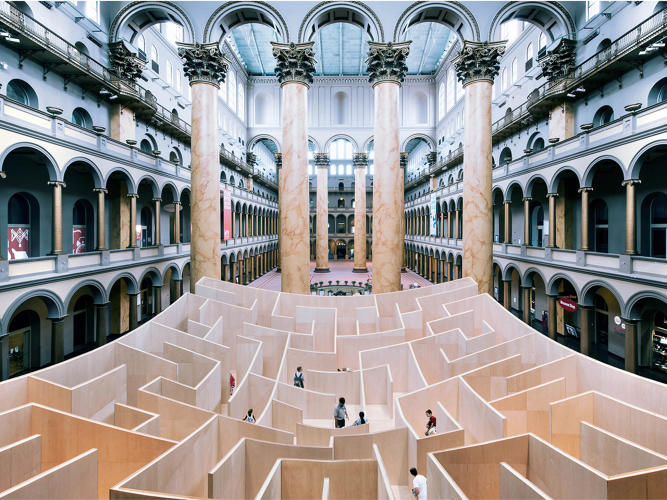The puckish Danish architect Bjarke Ingels has built his career on defying convention and distancing himself from his peers. When he was asked once about trends in his field, he replied, “We tend to study the works of our dead ancestors rather than our contemporaries.”
His iconoclasm and his heady brand of design, which combines strikingly modern shapes with venerable ideas about climate and context, have been great for business at his Copenhagen-based BIG Group. His diverse portfolio includes a power plant as well as a zoo in Denmark, office buildings in China, museums in France and Utah, and a luxe apartment building and flood-protection facilities in New York. Last fall, he unveiled a massive master plan for the Smithsonian Institution in Washington, which will be implemented between now and 2036. And this week, “Hot To Cold,” a new exhibition of his work, opens at the National Building Museum in Washington DC. Ahead of the exhibition’s opening, he sat down for an exclusive conversation with Fast Company—as part of a series called Kering Talks, chats with some of the most influential people in the world—to talk about the show, his inspirations, and his philosophy on building for a better planet.
[infobox]”Sustainability doesn’t have to be some kind of a compromise. It can be the element that drives the aesthetics.”[/infobox]On the “Hot To Cold” exhibition and the accompanying book
The exhibition at the National Building Museum is like a journey from the hottest climate we’ve ever built in—Qatar—through the different climate zones. You end up in Scandinavia. We were inspired by National Geographic. Each page in the accompanying book has a frame colored according to the climate you’re in. As you move through the exhibition and the book, the color goes colder and colder, until you get to the coldest places we’ve built anything: the National Gallery in Greenland. Because of this color coding, the book is like somehow very rainbow—almost like a gay flag made up of the different climates of the planet.
From our partners:
On the roots of his focus on climate
Buildings are always responding to a set of conditions. One of the main givens is the climate you build in. Of course there’s the cultural context, the financial situation, the political situation—there’s all kinds of conditions—but there’s always a climate you’re building in.
In the 1950s, Bernard Rudofsky made an exhibition at MoMA called “Architecture without Architects.” The international style of modernism had blossomed all over the world. He was starting to see the loss of site specificity. One of the driving forces of modernism was the advent of building services and building engineering. There were all these new inventions, great novelties that represented incredible freedom. There was air conditioning, so you wouldn’t have to make thick walls. There was central heating, so the envelope didn’t have to do all the work. There was mechanical ventilation, so you didn’t have to be able to open the windows and you could sit close to the window. There was electric light, so you weren’t dependent on daylight. Each of these innovations represented a freedom. But in the end, the building wasn’t doing anything. It was just a container of space, a boring box with a basement full of gas-guzzling machinery feeding light and air and a comfortable temperature. As a result, buildings started looking exactly the same everywhere.
What Rudovsky was fascinated by was what he called vernacular architecture. For centuries, even millennia, people had found ways of using locally available materials and local techniques to respond to conditions in a way that creates an exciting architectural vocabulary. In the flatlands in China, you have houses where, by making sunken courtyards, you can shade spaces and protect houses from the prevailing winds. You have the Greek villages, where the white color reflects heat and the flat roofs allow the inhabitants to go up on the roof in the evening, when you have the cool breezes. We’re not proposing that you should go back and build like you did before architecture had technology. But maybe there’s a way you could build what we call Vernacular 2.0.
Today, we have sophisticated technology. We can model, calculate and simulate the environmental performance of a building. We can predict how the sun will hit the different surfaces of the building. We can predict how air is going to flow between different structures. As an architect, I don’t like the idea of architecture without architects! But what we’re talking about is engineering without engines. You can use sophisticated engineering and tech to make the building independent of all the engines and machinery that go into the plant room, to find ways of responding, with the design of the building, to the context it’s in.
On building in a hot climate
We’re building a building in Shenzhen, a headquarters for the energy company. It’s a giant office building — 1 million square feet — in a humid, subtropical climate. If you’re doing a big workspace in a tropical climate, you want to resolve a dilemma: You want to maximize views and daylight and minimize thermal exposure and glare. Typically, office buildings in Shenzhen are all glass, which is one of the worst things you can do in a tropical climate. You need some kind of shade. So we said, What if the façade is like a pleated dress? It’s completely open to the north but blocks the sunlight from the south. Look south and you see these walls of bamboo washed in daylight. When you turn around and look to the north, it’s completely transparent. This is a very, very simple idea—no moving parts, no sophisticated technology—but it reduces the energy consumption for air conditioning by 30%. What makes the building look different is what makes it perform differently. It’s a super-simple commonsense idea. The geometry of the building responds to the climate.
[infobox]”My CEO called me up when she saw the proposal and said, ‘This is a $1 Billion project in our hometown. Don’t fuck it up with a ski slope.”[/infobox]Another example: We got invited to do a museum for the human body in Montpellier. It’s the warmest city in all of Europe. The façade somehow needed to respond to the climate. We’d done this building in Shenzhen, so we thought maybe we could take this idea one step further. When you make permanent louvers, when you are facing south, they want to be horizontal so that they can block the direct sun and you can look out. At the east and west, the sun is coming at a lower angle; you need a more gentle angle to block the lower incoming sun, so you have vertical louvers. When you have a curvilinear building, that optimum angle is always changing—the way you counter the sun’s angle with the louver is slightly different. If you unfold this, to the south it’s horizontal and then the angle changes toward the north. Once you apply it to the building, you create a façade that almost looks like the pattern on a thumbprint. It’s just the louver always being tailored to the orientation the façade has, but the result is almost ornamental. In fact, it’s a very blatant optimization of how the building responds to the climate around it. In that sense, sustainability doesn’t have to be some kind of a compromise—it can even be the element that drives the aesthetics. It can create its own language if you find ways of using the forces of the environment to produce shapes or forms.
On building in a cold climate
The biggest building we’ve done to date is this waste-to-energy power plant in Copenhagen. It’s going to be the biggest, tallest building in Copenhagen. It’s probably going to be the landmark of Copenhagen in the future, but it’s not a royal palace or a cultural palace. It’s a power plant that turns trash into heating. The citizens of Copenhagen throw out their waste and they actually get it back in the form of heating and cooling—one ton of trash equals 1 and 2/3 barrels of oil.
Danes love to ski. We have tons of snow. But we have absolutely no mountains — our tallest point is 500 feet — so we have to go to the north of Norway or the Alps to ski. We don’t have mountains, but we do have mountains of trash, and because of the sheer magnitude of this power plant, it will be 300 feet tall. So we organized it as a continuous slope. We will have an elevator that takes you to a green, a blue, and a black ski slope. We have planted trees, and they gradually fade out so you go above the tree line at the top. We did a lot of homework—we even spoke to a ski-resort manager. My CEO called me up [when she saw the proposal] and said, “Bjarke, this is a $1 billion project in our hometown. We want to win this. Don’t fuck it up with a ski slope.” Miraculously, we won the project, and then she said, “Okay, there’s a reason I do what I do and you do what you do.” But then we thought, “Damn, we have to figure it out.”
Basically, it’s going to be like an entire manmade ecosystem. Not only does it harvest local resources—rainwater—it also forms an urban metabolism where the waste turns into energy. The topography is informed by emergency valves that come out; when there’s too much pressure, you have to blow out some steam. You’ll have a hiking path for the summer—it will be an accessible public park for people who don’t ski. We’ll have the tallest climbing wall in the world—300 feet for those who have the cojones. And the reason this is even possible to ski on is that this is going to be the cleanest waste-to-energy power plant in the world. The CEO of the power plant company, she really liked this idea to make a building that would express something different. Normally you would want to put a waste management facility or a power plant far away because it is toxic. But here you will have fresh mountain air! It’s going to open in 2017.
We thought also as an art piece, it could be interesting to really play with completely changing people’s perception of what a power plant is. Because the smoke coming out of the chimney is completely nontoxic—it’s only steam and a little bit of CO2—we got this idea to mold the emissions so that it comes out in the form of gigantic smoke rings. The idea is to associate the emissions so that it would be like making it countable—accountable—each time it emits a steam ring, it’s equivalent to one ton of CO2. One problem with CO2 emissions is that nobody knows what a ton of CO2 is. Understanding always precedes action. If you don’t know, you can’t act. But if you come in 2017, you can see: We will project our carbon emissions on the sky.
[infobox]”We will project our carbon emissions on the sky.”[/infobox]But in the phone book, there are no giant steam-ring contractors. The project almost died. Dammit, we have to figure out how to do this. So we decided to invest some of our own money. The energy company is a publicly listed company, so they can’t spend money making steam rings. We worked with a company called Copenhagen Sub-Orbitals—they are basically DIY rocket scientists. This August, we had a test. There’s something wonderful about the idea of turning steam emissions into rings in the sky. There’s something magical about architecture, about making the world a little more like your dream, about taking things that are ideas but manifesting them into physical reality.
On his unlikely entry into architecture
I was always really good at drawing, so I thought I was going to become a cartoonist. When I graduated from high school, there was no cartoon academy. So I enrolled in the Royal Danish Academy’s school of architecture. Education is free in Denmark, so you can be a little more frivolous about your choices. I had always been drawing people in action or people in helicopters or explosions, not so much buildings or landscapes. So I thought I would spend two years getting better at backgrounds, and then I could really make an amazing comic book. But somehow I got sidetracked into architecture.
On the relationship between graphic novels, video games, and architecture
Graphic novels create the framework for narratives using images—you create a structural framework that allows a narrative to unfold. Architecture is the art of creating the framework for life. The more exciting the framework, the more amazing the narratives you can create.
We were approached by Ubisoft, which makes video games, because they liked our way of thinking. It used to be in games that you focus on the story or the characters, but what’s even more important is that if you create a world that is desirable and believable and attractive, people want to spend time in it. Creating exciting and stimulating environments is a primary condition for making stories. Architecture is not just about accommodating very prescriptive demands—it’s doing it in a way that stimulates the unfolding of life.
On what science fiction shares with architecture and design
I love science fiction. Philip K. Dick’s definition of science fiction is a great inspiration for how design actually works. He says that science fiction is not a space opera, although it often takes place in space, and it’s not a story from the future, though it often is. Science fiction is a story where the plot is triggered by some form of innovation — often it’s technological innovation but it could be cultural innovation, biological innovation, social innovation. The entire story unfolds as a narrative exploration of the potential of that innovation. You change one ingredient and you see all these effects, like rings in the water, and you explore that as a writer.
It’s exactly the same thing we do in architecture. Once we identify the key criteria, we ask, “Could it be like this or could be like this?” The design process becomes a design exploration of the potential of that changed parameter. I can really see that, in any field, this is true. Once you identify how something could be different, it becomes an exploration of the potential of that one changed ingredient.
[infobox]”Hedonistic sustainability is the idea that you can actually be sustainable but increase the quality of life while doing so.”[/infobox]On his West 57th Street project in Manhattan
When I show the things we do, I often get this objection that it’s only possible in semi-socialist Scandinavia. But we got a phone call from the Durst Organization in New York to look at a site on the West Side that’s sandwiched between a power plant and a waste management facility. It’s right on the West Side Highway. It’s south- and west-facing and has beautiful views of the Hudson. We decided what we should do is provide an oasis modeled on the Copenhagen courtyard. The Copenhagen courtyard is at the architectural scale what Central Park is on the urban scale—an oasis in the city—so what happens when you combine the density of a skyscraper or the communal space of a courtyard? What could a “courtscraper” look like?
To give it Manhattan density, we raised the northeast corner of the building to 470 feet. From the east, it’s more like a spire. But we kept the south and the west low, so we provide sunshine for the courtyard and views. It creates this striking silhouette. When you enter the courtyard, you have this oasis that’s protected from the noise of the highway. It has the proportions of Central Park, only 13,000 times smaller—it’s like a bonsai Central Park.
On the Big U/Dry Line project in New York City
When you look at the map of Manhattan, historically, since the 17th century, we’ve been creating more and more landfill. We made it, so we have to protect it. You need more than eight contiguous miles of flood protection. Can we make this flood protection without creating a wall that segregates the life of the city from the water around it? Learning from the High Line, can we imagine that the infrastructure for flooding could be combined with different programs?
[infobox]”We thought of this project as the love child of Jane Jacobs and Robert Moses.”[/infobox]New York City’s development in the 20th century was very much shaped by the encounter between Jane Jacobs and Robert Moses. There was this David and Goliath moment in Manhattan history where Robert Moses wanted to plow a highway through Greenwich Village, and Jane Jacobs rallied the local community and managed to mount such a great resistance to defeat the plans.
We thought this project that we call the Big U—or the Dry Line—could be the love child of Jane Jacobs and Robert Moses. Our idea is that you have this big U [wrapping around the bottom half of Manhattan] that’s compartmentalized just like a hull of a ship. You have narrow zones where you can protect one neighborhood at a time, and we got funding for the first compartment, on the Lower East Side. On the one hand, it has to resist the massive scale of an incoming flood, but it has to happen rooted in the demands and the dreams of the local community. We spent the last year working with people on the Lower East Side to provide input for what this could be like.
On his vision for the future of architecture
Geologists speak of the era we’re living in as the anthropocene—the human era. Today, humans are the greatest force of energy: We dam rivers, we cause deforestation, we cause desertification. It has been proven that, beyond a doubt, we have the capacity as the human race to cause massive impact at a planetary scale. That also means that with great power comes great responsibility—to quote Spider-Man.
Projects like the Dry Line are essentially how we somehow can be responsible. We created all this land in Manhattan; now we have to find smart ways of making our cities resilient. Hedonistic sustainability is the idea that you can actually be sustainable but increase the quality of life while doing so. The same goes with resilience. You have to find smart ways of providing all these necessary safety measures, but do it in a way that advances the human project and creates a wonderful framework for human life.
This feature originally appeared in FastCoDesign.








